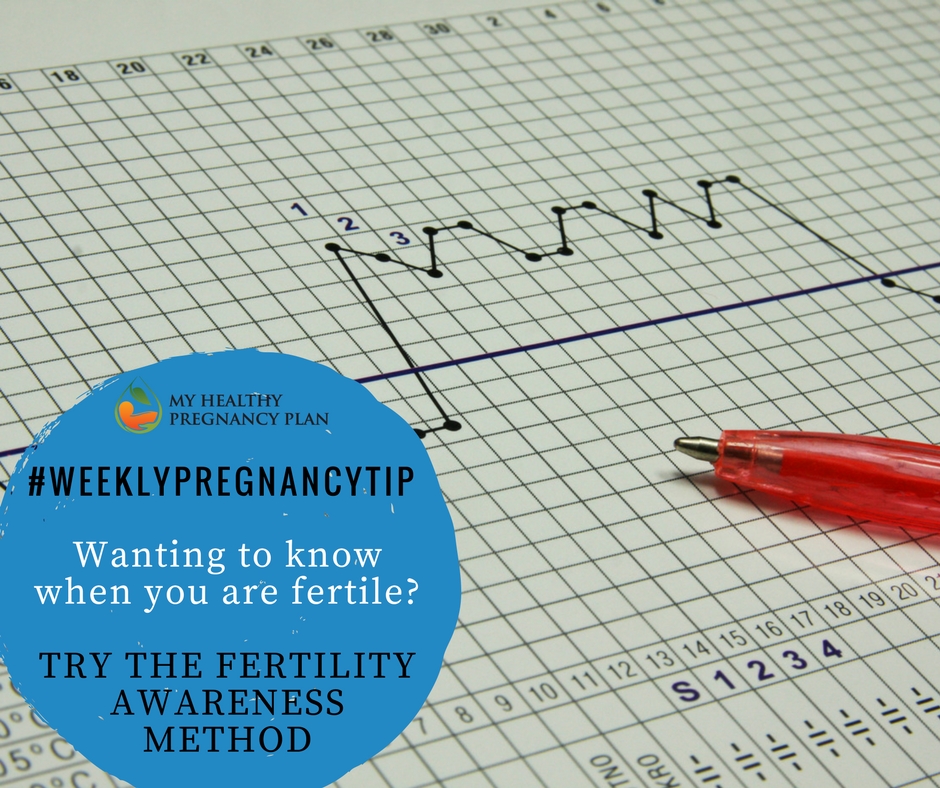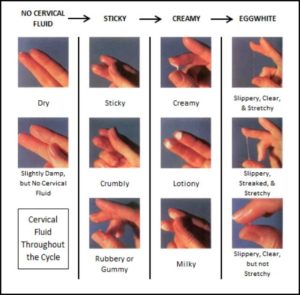
The Fertility Awareness Method (FAM) allows you to identify the days in your menstrual cycle on which you’re more likely to be fertile. This information can be used to avoid pregnancy, or help get pregnant when the time comes to start your family. FAM involves tracking waking temperature, cervical mucus, and cervical changes. If you are using FAM as contraception, barrier methods or abstinence are used during the fertile phase (approximately 30% of the cycle). If you are using FAM to get pregnant, you have unprotected intercourse on your most fertile (‘peak’) days.
FAM is not the rhythm/calendar method, which involves abstaining around day 14 of your cycle, without charting your fertility signs.
How do I chart my fertility signs?
Waking temperature
 your peak day = 1-2 days before temperature rise
your peak day = 1-2 days before temperature rise- use a basal body thermometer, first thing on waking
- negate outlier temperatures, and draw a coverline that denotes the progesterone-induced temperature shift after ovulating
- learn your pattern of when you typically see that temperature jump
Cervical fluid:
 your peak day = your last day wet/slippery (“clear eggwhite”)
your peak day = your last day wet/slippery (“clear eggwhite”)- check when wiping or by inserting a clean finger
- changes in cervical fluid tell you when you are approaching ovulation – the egg-white slippery fertile mucus is alkaline and provides nourishment to the sperm
- throughout your cycle your cervical fluid should change from dry ⇒ slight moisture ⇒ sticky ⇒ creamy ⇒ clear eggwhite (slippery, can stretch – this is the fertile mucus) ⇒ dry (suddenly – after ovulation) ⇒ one day of wet before menses (photo credit: tcoyf.com)
Cervical changes (optional)
- your peak day = when your cervix is Soft, High, Open, Wet (SHOW)
- check by inserting a clean finger
- this is an optional sign, but will give you more information and help cross-check and confirm your other assessments
If I am using FAM as contraception, how do I use this information?
The egg can live up to 24 hours, and the sperm can live up to five days, so with a buffer there is a week of combined fertile time that should be avoid if using as contraception. Use these rules to determine when to abstain from sex or use barrier methods:
- First 5 Days: safe the first 5 days of the menses if you had an obvious temp shift 12-16 days previous
- Dry Day Rule: before ovulation, you are safe the evening of a dry day
- Temp Shift Rule: safe the evening of the 3rd consecutive day your temp is above the coverline
- Peak Day Rule: safe the evening of the 4th consecutive day after your peak day
When followed correctly, FAM has a 98% success rate as contraception. Please notes that using FAM as a contraceptive method requires being with a safe partner (no STI risk), requires disciple (to learn the method and follow the rules), and requires charting for several cycles before using reliably as birth control.
If I am using FAM to help conceive, how do I use this information?
If you are trying to conceive, have sex on your peak days (egg-white cervical mucus, cervix soft/high/open/wet). Your fertile phase is as long as you have fertile cervical mucus – this might be several days, or as few as one. Once you have charted for a few months you will get a better idea of when you typically ovulate during your cycle, and what your fertility signs look like.
My chart doesn’t look ‘typical’ – am I doing it right and how can I interpret it?
Toni Weschler’s ‘Taking Charge of Your Fertility’ book and website (www.tcoyf.com) has lots of fantastic information about how to chart your fertility signs, and how to read the results, including an active forum on the website. You can even chart your fertility signs online if you prefer that method.
I always invite my own patients to bring their charts into their appointments so that I can help interpret the results. Every woman’s body is unique, so no two charts will be identical. We can help analyze whether your cycle is normal and healthy, whether there may be a hormonal imbalance, or whether there may be an error in how you are tracking your fertility signs.
Whether you are using FAM to learn more about your body, as a method of contraception (or to make your current contraception methods more effective), or to plan a pregnancy, the more information you have about your cycle the better!
I hope you have found this helpful, and do let me know if you have any questions!
If you are hungry for more evidence-based information in your pregnancy, sign up for my free webinar: 7 Pregnancy Myths Debunked – and get the information you need to have a healthy pregnancy and a thriving baby.
And if you are a care-provider looking for evidence-based resources for your pregnant patients, please get in touch with us at support@myhealthypregnancyplan.com.
In health,
Dr Jocelyn Land-Murphy, ND
Terra Life
Disclaimer: The information and content provided is for general educational and informational purposes only and is not professional medical advice, nor is it intended to be a substitute therefore. Please consult the Disclaimer and Terms of Use for full details.
References:
Weschler, T. (2015). Taking Charge of Your Fertility, 20th Anniversary Edition: The Definitive Guide to Natural Birth Control, Pregnancy Achievement, and Reproductive Health. William Morrow Paperbacks.





